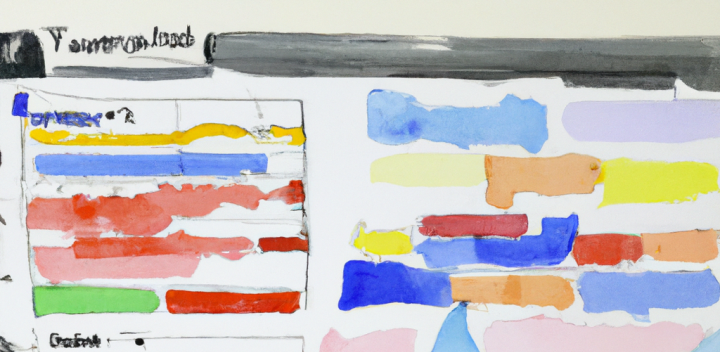Mastering Data Visualisation and Storytelling: A Guide for Leaders
Enhancing data teams and leaders with design, communication and storytelling techniques.
4 mins reading time
In today’s data-driven landscape, the ability to transform complex information into insightful narratives has become a prized skill. In my work with leaders, I have found that the effective communication of data-driven insights is not only a means to inform decisions but also a catalyst for organisational success.
However, in the journey towards mastering the art of data visualisation and storytelling, an often-underestimated challenge lies in bridging the gap between skilled professionals and those leaders.
While many professionals and enthusiasts invest in up-skilling themselves in the nuances of visualisation and data storytelling, they often find themselves navigating complaints and hurdles arising from managers who might not fully grasp best practices and challenges associated with producing high-quality data visualisations dashboards and reports.
Below I share four ideas to help leaders better understand how they can support their teams and what are some of the challenges they face.
Set The Foundations
When it comes to data visualisation, understanding some key ideas can significantly enhance leaders’ ability to convey insights compellingly. Whether it’s crafting data products using the simple bar charts for clear and effective comparisons, producing a trend-revealing power line graph to understand data over time, creating relationship distribution insights from scatter plots, finding patterns from heat maps, or proportionally comparing data across pie charts, each technique can serve a distinct purpose and affect the audience in different ways. The choice of technique hinges on the story you intend to tell and the data at hand. Leaders who are well-versed in these techniques can make informed decisions that are grounded in data-driven insights and on visual encodings that suit.
Adopt a Designer's Mindset
Producing impactful data visualisation solutions goes beyond selecting the right chart type; it also involves adhering to design principles that enhance clarity and engagement. Utilising appropriate and thoughtful use of colour palettes, choosing readable and purposeful fonts, and maintaining proper labelling are just a few of the design aspects that contribute to effective visual communication. Leaders who understand these design nuances can guide their teams to create visualisations that not only tell a story but also resonate with viewers, ultimately leading to better comprehension and decision-making.
Craft Persuasive Narratives
At the heart of a successful data communication product, be it a dashboard or even the good ol’ power point, lies storytelling. Drawing inspiration from narrative techniques prevalent in business and data domains, leaders can weave compelling stories around their data. Utilising techniques such as the hero’s journey, problem-solution narratives, and data-driven anecdotes, leaders can engage their audience emotionally and intellectually. This fusion of storytelling and data empowers leaders to convey complex information in a relatable and impactful manner, fostering a deeper understanding and connection, inviting for dialogue.
Unleash the True Power of Basic Tools
While PowerPoint and Excel are commonly used tools, their potential for data visualisation often remains untapped. It can be tedious but applying best practices, such as proper data formatting, effective chart titles, and intuitive labelling, can transform these everyday tools into powerful mediums for impactful visual communication. Leaders who harness these best practices can elevate their presentations from mere data dumps or boring decks to persuasive narratives, capturing their audience’s attention and driving informed decision-making.
My hope is that by integrating the ideas above, managers will change how they support their teams and will, ultimately, not just convey information; leaders will start crafting stories that inspire action and drive success. And as you venture deeper into the realm of data visualisation and storytelling, consider exploring some of my own in-depth training resources aimed at enhancing leaders’ skills in data visualisation and storytelling.
To learn more, visit Felipe Rego’s training courses and unlock the potential of transforming data into impactful narratives.
By addressing the challenges that arise from the gap between professionals and leaders, mastering data visualisation techniques, designing compelling examples that abide by design best practices, crafting persuasive narratives through storytelling techniques, and unleashing the potential of common tools, leaders can wield the power of data to drive informed decisions and inspire action.